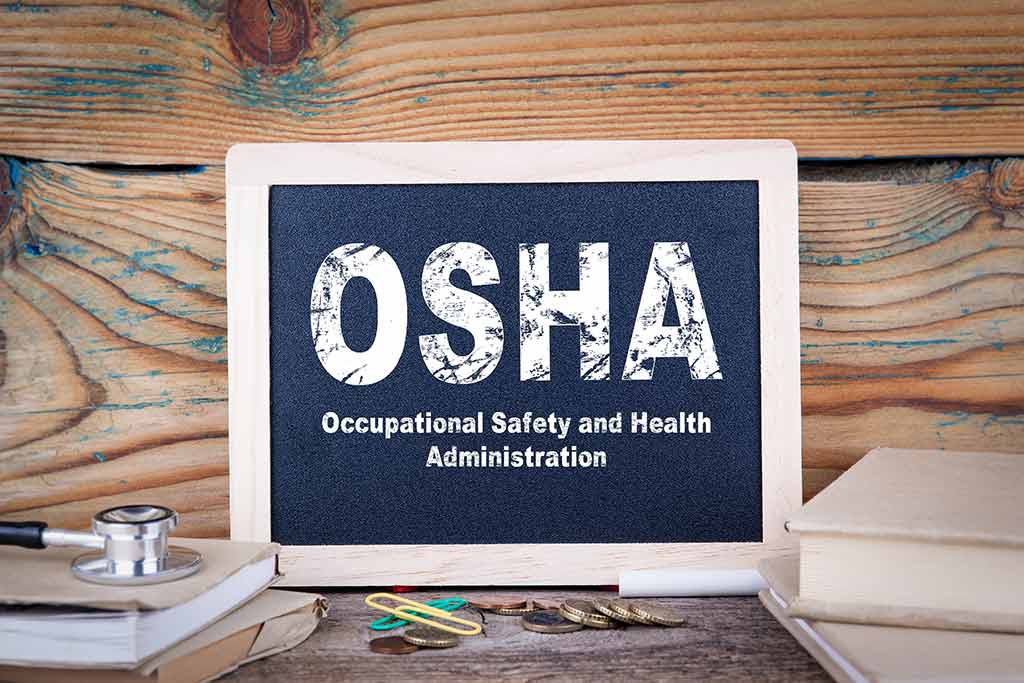CCS Safety Training’s 30-Hour General Industry Course
Completion of this specialized on-site training equips participants with the knowledge to recognize, avoid, prevent, and stop potential jobsite hazards
CCS Safety Training’s 30-Hour General Industry Course
The CCS Safety Training’s 30-Hour General Industry course is meticulously designed to educate workers about workplace and jobsite safety. Completion of this specialized on-site training equips participants with the knowledge to recognize, avoid, prevent, and stop potential jobsite hazards. At CCS Safety Training, we are dedicated to ensuring that workers across various industries and responsibility levels receive comprehensive education about common workplace hazards through this OSHA 30 General Industry Training.
Who Needs 30-Hour General Industry Training?
To uphold workplace safety and hazard recognition standards, regular safety training is highly recommended by OSHA. This on-site, OSHA-authorized course is particularly beneficial for workers in factory operations, manufacturing, storage, warehousing, healthcare, and more.
What’s Covered in the 30-Hour General Industry Training?
The training encompasses key areas such as:
- Electrical Hazards
- Walking and Working Surfaces
- Hazard Communication
- Personal Protective Equipment (PPE)
- Exit Routes and Emergency Plans
- Bloodborne Pathogens
- Machine Guarding
- And more!
Course Details for 30-Hour General Industry Training
It’s essential for general industry workers to have access to quality OSHA Outreach training, as it significantly impacts how workplace hazards are managed and addressed. The on-site CCS Safety Training’s 30-Hour General Industry course includes:
- Engaging audio narration and interactive exercises
- Real-life case studies
- Comprehensive lesson reviews at the end of each course section
- Downloadable and printable course study guides
- Continuous access to an OSHA 30 General Industry instructor for any questions
30-Hour General Industry Course Topics
The topics covered in the OSHA 30-Hour General Industry Training offer in-depth insight and education on a range of OSHA-designated health and safety areas, including:
- Introduction to OSHA and Inspection Procedures
- Safety & Health Programs
- Recordkeeping
- Hazard Communication
- Exit Routes, Emergency Action Plans & Fire Prevention
- Fire Detection & Protection
- Electrical Safety
- Flammable & Combustible Liquids
- Lockout/Tagout
- Machine Guarding
- Welding, Cutting & Brazing
- Material Handling
- Ergonomics
- Permit-Required Confined Spaces
- Personal Protective Equipment
- Industrial Hygiene & Bloodborne Pathogens
- Hand & Portable Power Tools
- And much more, including case studies and workshops
Earning Your OSHA 30 Card
Upon successful completion of the 30-Hour OSHA training, participants will receive an official OSHA 30 card from the U.S. Department of Labor (DOL). In the interim, a certificate of completion can be instantly downloaded and printed after passing the course, serving as temporary proof of completing the training.
Does the OSHA 30 Card Expire?
The OSHA 30 card does not expire. However, some states, employers, or local jurisdictions may require workers to retake the course periodically.
Questions?
888-586-9495
Related Classes:
Confined Space Entrant & Attendant
MSHA Part 48B Annual Refresher Training
MSHA Part 48B New Miner Training
OSHA Outreach 30-Hour Construction Course
OSHA Outreach 10-Hour Construction Course
OSHA Outreach 10-Hour General Industry Course
Why On-site Training?
In the critical moment of accountability, when facing an OSHA inspector after an incident, how do you want to define your company’s commitment to safety? Would you prefer to admit to just meeting basic requirements through online videos, or proudly affirm that your company went above and beyond by investing in on-site, OSHA-certified trainers? Choose the path that not only enhances safety but also demonstrates your unwavering dedication to your employees’ well-being and compliance with the highest standards.
Hands-On Experience
On-site training allows for practical, hands-on learning experiences. This is particularly important for safety training, where physical demonstration and practice of safety procedures can be crucial.
Immediate Feedback and Interaction
Real instructors can provide immediate feedback and clarification. This interactive environment can enhance understanding and retention of safety protocols.
Customization to Specific Worksite Needs:
On-site trainers can tailor the training to the specific hazards and safety requirements of the workplace. This ensures that the training is directly relevant and applicable to the employees’ daily tasks.
Building a Safety Culture
Having an instructor physically present emphasizes the importance of safety in the workplace. It can help in fostering a culture of safety among the employees.
Enhanced Engagement
Physical presence of an instructor can lead to higher levels of engagement and participation. Employees are more likely to ask questions and interact in a live setting.
Observation of Workplace Practices
Instructors can observe the current practices and behaviors in the workplace, providing specific, contextual advice and adjustments to improve safety.
Team Building
On-site training can also serve as a team-building exercise, strengthening the teamwork skills necessary for effective safety practices.
Compliance with Specific OSHA Requirements
Certain OSHA training requirements may be more effectively met through on-site training, especially where practical demonstrations are required.
Reducing Miscommunication
Face-to-face training reduces the risk of miscommunication which can occur in online formats, ensuring clearer understanding of safety procedures.
Adaptability and Flexibility
On-site trainers can adapt their teaching style and content on the fly, based on the response and needs of the attendees.
Immediate Resolution of Queries
Any doubts or queries can be immediately addressed and resolved by the instructor, which is not always possible in online formats.
Networking and Sharing Experiences
Employees can share their experiences and learn from each other’s safety practices and incidents, fostering a collaborative learning environment.
Ensuring Engagement and Attendance
Physical presence in a training session ensures that employees are actually participating and attentive, as opposed to online training where engagement can be harder to monitor.
Motivation and Morale:
The investment in on-site training can boost employee morale, showing that the company values their safety and well-being.
Addressing Language and Literacy Barriers
On-site training can be more effectively modified to address language and literacy barriers among workers, ensuring that all employees receive the training they need.













